A History of Fine Art Photography
Not Simply Representing What Exists, But Capturing It
By Peter Letzelter-Smith
The cityscapes of Henri Cartier-Bresson, the disturbing insights into the different captured by Diane Arbus, Robert Mapplethorpe’s haunting images of beauty in forms sublime and controversial, and the iconic portraiture of Yousuf Karsh — they are not only icons of modern art, but images burnt into the popular cultural landscape.
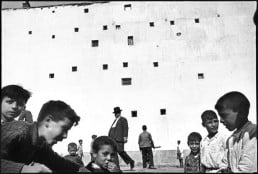
But it wasn’t always so. The first photographs date to the 1820s. Photographic techniques developed throughout the following century. But during the 19th century, the entry of photography into the realm of the fine arts was met with resistance by cultural critics and gatekeepers.
It was a widely held opinion that photography was a mere mechanical capturing of reality. That no creative spark was present in photography. The poet and influential art critic Charles Baudelaire went so far as to write in an 1859 treatise on photography: “It is useless and tedious to represent what exists, because nothing that exists satisfies me … I prefer the monsters of my fantasy to what is positively trivial.”
It took time to fully accept that a new set of tools — like the brushes and canvases used by painters — had taken hold with a new generation of artists. This adaptation to new technology might be compared to recent work by artist David Hockney, who now uses an iPhone as a medium for creating imagery.
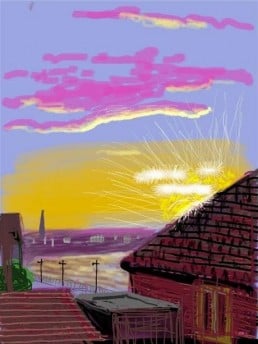
In response to the conservative reaction to photography, societies were founded to represent the new art form. The Photographic Society of London (today the Royal Photographic Society) and the Societe Francaise de Photographie were both founded in the 1850s. Publications like La Lumiere in Paris and the Photographic Journal in London came into being.
In 1858 London’s South Kensington Museum — now the Victoria and Albert Museum — hosted the first major photography exhibition. The 1891 International Exhibition of Art Photographers in Vienna was also a landmark event, with over 4,000 photographs submitted from around the world that culminated in 600 pieces exhibited in the Imperial and Royal Austrian Museum of Arts and Manufactures. But these exhibitions approached photography more as a representation of the fruits of the Industrial Revolution than as an art form.
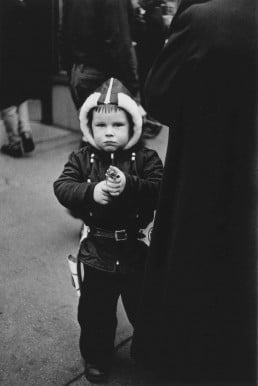
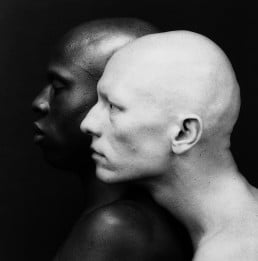
It was what happened in small galleries in the first decades of the 20th century — especially in New York — that solidified photography’s place as a fine art. It was in these more experimental spaces that photographic images first shared exhibition space as equals alongside more traditional visual arts.
The founding pioneer of this transformation was Alfred Stieglitz. Not only an influential photographer, he was also a champion of the new form who became a leading art gallery manager and promoter. This second career included introducing the United States to a host of European artists and relentlessly promoting the work of his future wife, the painter Georgia O’Keeffe, who was also an important subject of Stieglitz’s photography. Eventually, her career overshadowed his own, in no small part due to his curatorial efforts.
In 1896 Stieglitz was one of the founders of The Camera Club of New York. In 1902 he curated a photography exhibition at the National Arts Club dubbed the “Photo-Secession,” which included the work of over 30 individual photo artists. It was an immediate success and put photography on the New York art scene to stay.
The show led to Photo-Secession becoming a movement that stressed the significance of darkroom image manipulation — not simply the framing or timing of the photograph at the moment it was taken — as the true work of the photographic artist.
In 1905 Stieglitz, along with fellow photographer Edward Steichen — a very important figure in his own right who ultimately would become the director of the Department of Photography at the Museum of Modern Art (MoMA) from 1947 to 1961 — established the Little Galleries of the Photo-Secession.
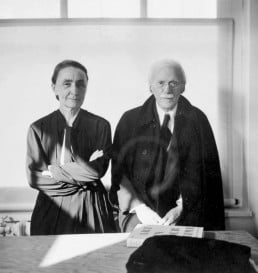
Over the next two decades, Stieglitz and collaborators continued to create gallery spaces like 291, the Intimate Gallery, and An American Place. These venues were the first dedicated spaces in the world for photography and regularly hung modern paintings and photographs side-by-side, influencing not only which individual photographers were seen but also how their work was perceived as an art form.
From these beginnings, fine art photography began to grow and exploded over the rest of the 20th century into a myriad of forms and techniques. Color photography was the most obvious technical addition to the photographer’s palette, especially after Kodak introduced Kodachrome film in 1935.
After Stieglitz, Steichen, and others put fine art photography on the cultural map in New York, experimentation and adaptation brought a number of photographers to the forefront. The majestic landscapes and still-life photographs of Edward Weston and Ansel Adams, the documentary portraiture of Paul Strand, the industrial montages of Bernd and Hilla Becher (founders of the Düsseldorf School), and Dust Bowl moments captured by Dorothea Lange all found their way into the now bigger tent of visual fine arts.
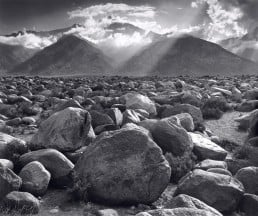
From its earliest days in the 19th century, one of the first obvious roles for photography was as a device for portraiture. The medium is a natural one for capturing a moment in the life of an individual, a moment molded into a permanent remembrance of who a person was at that moment in time.
Throughout the 20th century, photography continued and expanded the repertoire of portraiture. Fashion photographers such as Irving Penn and Mario Testino; “Street” photographers like Cartier-Bresson, Lange, Arbus, and Walker Evans; and formal portrait artists like Karsh, Andy Warhol, and Annie Leibovitz pushed the boundaries of photographic art.
As photography developed as an art form, crucial exhibitions were organized that cemented photography’s place in the fine arts world.
One of the most famous and important exhibitions was curated by Steichen during his tenure at MoMA. The Family of Man, which ran during the first half of 1955, consisted of 503 photographs by 273 photographers from 68 countries, with an underlying theme of celebrating the common human experience in the aftermath of World War II. The exhibition eventually toured around the world and was seen by more than 9 million people. It is probably the single most important event in the history of photography.
“The Family of Man, of course, was a seminal exhibition,” says curator and author Alessandra Mauro. “We are all, you could say, sons of Family of Man.”
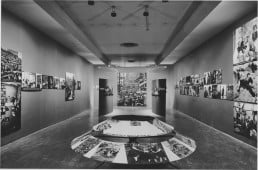
Today there is no shortage of permanent collections and gallery spaces dedicated to fine art photography, all to some extent built on the legacy of Stieglitz and Steichen.
Developed in part by Steichen, the MoMA’s collection is considered one of the most important in the world. The Metropolitan Museum in New York also has a vital collection that includes important donations from Stieglitz. The George Eastman Museum in Rochester, New York, the Victoria and Albert Museum, the Tokyo Metropolitan Museum of Photography, and Switzerland’s Fotomuseum Winterthur also house collections of global importance.
Finally, a number of private galleries specialize in fine art photography. The Fraenkel Gallery in San Francisco, Amsterdam’s TORCH Gallery, Galleria Carla Sozzani in Milan, the Magnum Gallery in Paris, Camera Work in Berlin, the Photographers’ Gallery of London, and New York’s Yossi Milo all carry on the legacy of Stieglitz, Steichen, and the other early pioneers of fine art photography.
Sources:
https://daily.jstor.org/when-photography-was-not-art/
http://www.arthistoryarchive.com/arthistory/photography/
http://www.nybooks.com/articles/2009/10/22/david-hockneys-iphone-passion/
http://www.visual-arts-cork.com/fine-art-photography.htm
https://www.widewalls.ch/photography-galleries/
Get your free copy of Artland Magazine
More than 60 pages interviews with insightful collectors.